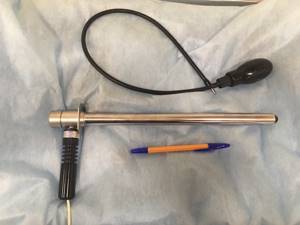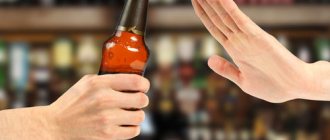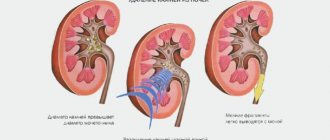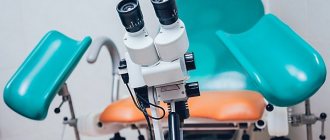Residue-free diet in preparation for colonoscopy
Colonoscopy, like any other endoscopic or x-ray method for examining the large intestine, can be informative only when there is no stool in the intestine. Therefore, proper preparation for a colonoscopy is a prerequisite for its successful completion.
How to properly prepare for a colonoscopy? To do this, two requirements must be met. The first is a special, slag-free diet - preparation for the colonoscopy procedure cannot be complete without meeting this condition. The second requirement is a thorough cleansing of the intestines, which can be accomplished in various ways. It must be remembered that preparation - diet and bowel cleansing - should be done in advance, and not directly on the day of the examination.
Slag-free diet before colonoscopy (easily digestible, refined food, containing almost no indigestible substances). Slag foods include those foods that cause bloating and bulky stools. These are the ones that need to be excluded 3 days before the examination.
The diet before a colonoscopy should not contain :
- Vegetables and fruits: all fresh and dried vegetables and fruits, cabbage in any form (both fresh and cooked);
- All varieties of greens (parsley, dill, lettuce, cilantro, basil, etc.);
- Legumes (lentils, beans, peas, beans);
- Fruits (apricots, peaches, apples, dates, oranges, bananas, tangerines, grapes, raisins);
- Nuts;
- Berries (raspberries, gooseberries, currants), raisins;
- Milk, carbonated drinks and kvass;
- Flour products and cereals: all grain-containing products (whole grains, products containing crushed grains, nuts, poppy seeds, coconut flakes, etc.), brown bread, cereals (oatmeal, pearl barley, millet), muesli;
- Seasonings and canned food: hot seasonings (horseradish, pepper, mustard, onion, vinegar, garlic), as well as all seasonings (sauces) with grains, herbs, pickles, canned food, salted and pickled mushrooms, seaweed;
- Meat, fish: fatty fish and meats, duck, goose, smoked meats, sausages, frankfurters;
- Drinks: alcoholic drinks, kvass, sparkling water, prune drinks.
A colonoscopy diet may include:
- Flour products and rice: white bread made from enriched refined premium flour, porridge (rice, oatmeal), muffins, biscuits, bagels (bagels) - without poppy seeds, simple crackers (without additives), vermicelli and noodles made from premium flour, including .h. White rice;
- Meat: soups with low-fat meat broth; various, well-cooked dishes made from lean beef and veal; boiled chicken, also in the form of cutlets, meatballs, soufflé; egg;
- Fish: dishes from cod, pike perch, perch, pike (low-fat fish);
- Dairy products: calcium-rich foods (low-fat cottage cheese, cheeses), natural yogurt (no additives!), no more than 2 glasses of skim milk;
- Vegetables: vegetable broths, potatoes (without peel);
- Fruits and drinks: mousse, ½ banana, peach, melon. Tea, weak coffee, compotes, jelly and juices, preferably clear (without pulp, dried fruits, berries and grains!);
- Sweets: sugar, honey, jelly, syrup;
- It is possible to cook food, as well as use butter (butter, vegetable), mayonnaise, margarine in limited quantities.
On the eve of the examination, the last meal should be no later than 12.00 noon. You can drink tea, mineral or plain water. Only tea is allowed for dinner.
Colonoscopy under general anesthesia is performed on an empty stomach!
Rectoscopy (sigmoidoscopy)
Home» Diagnostics» Rectoscopy
Make an appointment with a proctologist in St. Petersburg
How to prepare for a consultation with a proctologist
If you try to compile the TOP 10 reasons why potential patients do not rush to the proctologist’s office, the need to undergo a rectoscopy will definitely be there, not in the top three, of course, but not in last place, somewhere between the fear of hemorrhoidectomy and colonoscopy, and reluctance to undergo complicated preparation for inspection. At an in-person consultation, when after a preliminary conversation you invite a person for an examination, many patients ask the standard question “will you look at me with this terrible iron tube?” On the pages of our website, we try to prepare potential patients as much as possible for a meeting with our doctors. Unfortunately, it is unrealistic to turn a consultation with a proctologist into one sheer pleasure, but at the same time, many of the patients’ fears are completely unfounded, which is what we try to talk about in each of our articles, in particular “Consultation with a proctologist” and “Anoscopy”. Continuing the topic, this page provides complete and objective information about rectoscopy, which is an optional but not uncommon part of a proctologist’s examination.
What is rectoscopy (sigmoidoscopy)?
Rectoscopy (sigmoidoscopy) is a method of endoscopic (visual) examination of the rectum, the length of which is about 16 cm. Accordingly, according to the standard, when conducting this study, it is necessary to examine at least 16 centimeters of the digestive tube. In the absence of pain, anatomical features of the intestine that prevent inspection, and sufficient preparation, the equipment allows you to examine up to 30 cm, i.e. not only the rectum, but also the terminal part of the sigmoid colon.
How is rectoscopy (sigmoidoscopy) performed?

As with any endoscopic examination, rectoscopy requires a special device, in this case a rectoscope (see photo), which, in essence, is a rigid (as opposed to a flexible colonoscope) hollow cylinder that allows us to visually examine the area of the digestive tract that interests us tubes. There are several options for its design: reusable and disposable, plastic and metal, of different diameters and lengths, but in any case, the diameter of the device is very small - 18-20 mm. Patients often ask, why not make a rectoscope with an even smaller diameter? Unfortunately, the smaller the diameter of the rectoscope tube, the more difficult and less informative the examination and the higher the likelihood of complications (in particular, damage to the intestinal wall). There are children's tubes with a diameter of 12-15 mm, which are always included in the standard set for rectoscopy, but when examining adult patients they are used only in exceptional cases: with strictures (narrowings) of the rectum and anal canal, a very “complex” psychological status of the patient, etc. .d.

In many commercial clinics, it is customary to perform rectoscopy with the patient in the left lateral position (according to Simps), mainly because this is considered more emotionally comfortable for the patient. Based on my clinical practice, I can definitely say that this is the wrong approach to the issue. The rectum, despite its name (anatomists are generally people with a very rich imagination), is not even straight, and has several pronounced physiological bends, while being quite closely connected with the final part of the spine. Therefore, when the patient is in a position on his knees and elbows and arches the lower back, the curves are smoothed out, making the procedure much simpler and more informative for the doctor and less painful and dangerous for the patient. In all my personal experiments with rectoscopy on the left side, I was able to “creakly” see up to 14-15 cm, no more. You can, of course, blame natural crookedness, but in domestic clinical recommendations, the opinion of the group of experts who composed them completely coincides with mine - for sigmoidoscopy, the patient’s knee-elbow position is clearly recommended. In addition, patients consistently come to our Coloproctology Center, at least 1-2 times a year, who, after supposedly undergoing rectoscopy, are treated for “hemorrhoids” for six months or a year, and we find tumors at a height of 12-15 cm, and of this size that it is simply impossible not to notice them with a properly performed rectoscopy. The last such case was just a couple of months ago.
In our medical office, before the examination, the patient changes into disposable endoscopic shorts, goes to the examination chair, where he stands in the knee-elbow position. Next, the doctor inserts a rectoscope lubricated with Vaseline into the anus and, under visual control, moves it to the maximum depth. During the examination, the intestine is slightly inflated with air using a “pear” (see photo) in order to better control the intestinal lumen. All these manipulations, of course, cause moderate discomfort, both moral and physical, but the patient does not experience severe pain during the rectoscopy process .

The whole procedure takes no more than 3-5 minutes. Among the additional procedures that may be required during rectoscopy, it is worth mentioning a biopsy, i.e. sampling of a section of tissue for further morphological examination, and electrical excision (removal) of small colon polyps. Both procedures slightly lengthen the examination time, but are also very painless.
Indications for rectoscopy (sigmoidoscopy)
To diagnose all “minor” proctological ailments (hemorrhoids, anal fissures, rectal fistulas, anal canal condylomas, etc.), anoscopy is sufficient. Colonoscopy is used for a comprehensive examination of the entire colon. Discussion about why rectoscopy is needed arises both in the process of communicating with patients and even in the medical community.
The reasons for the widespread use of rectoscopy are in the economic and (in some sense) psychological planes. About the economy: a colonoscope and a sigmoidoscope (the latter is closest in capabilities to a rectoscope) are much more complex and expensive endoscopic devices, and require much more complex, time-consuming and expensive sterilization. Therefore, it is simply not economically feasible to have five such devices in order to “quickly” examine everyone in need during the consultation process. In addition, these studies can only be carried out by certified endoscopists; surgeons do not have this opportunity.
About psychology: yes, of course, colonoscopy completely covers all the diagnostic capabilities of rectoscopy, but at the same time it is a more complicated, more painful procedure that requires much more careful and tedious preparation, which patients agree to very reluctantly. When there is a reason to examine the intestine more deeply, a person should be referred to an endoscopist for a colonoscopy, and although all patients nod in agreement, imitating wild enthusiasm, practice shows that less than 50% actually complete this path. Rectoscopy can be carried out immediately, which significantly reduces the number of refusals - looking into the eyes of the doctor who has just been rubbing in you for an hour about how and why it is so important to undergo an examination, it is much more difficult to “jump off”. Yes, of course, rectoscopy allows you to examine only the rectum, but every experienced specialist can give at least a dozen or two examples where such an early diagnosis definitely saved the patient’s life, allowing treatment of a rectal tumor to begin at the earliest possible stage.
In our medical office, we strongly suggest that all patients over 40 years of age undergo proctoscopy, regardless of complaints (cancer prevention). For younger patients, this study is offered only if certain symptoms are present: bleeding, mucus or pus in the stool, difficulty defecating, etc.
Contraindications to rectoscopy (sigmoidoscopy)
The main reason for temporarily refusing to perform rectoscopy is only severe pain. In this case, you can either prescribe treatment and reschedule the procedure for a second appointment, or carry it out with local anesthesia, which is most often used gels with lidocaine (for example, Cathegel). The presence of a scar stricture (narrowing) of the anal canal is also a contraindication to the study, because it may simply be physically impossible to carry out it.
Preparation for rectoscopy (sigmoidoscopy)
With the advent of ready-made microenemas for self-preparation, this process has become significantly simpler and absolutely standard for all manipulations performed by a coloproctologist, with the exception of colonoscopy. More details on this issue can be found on the “Preparation for Inspection” page.
Complications after rectoscopy (sigmoidoscopy)
If in the article about anoscopy we wrote that complications are completely excluded, then with rectoscopy everything is a little less rosy. The device is rigid, inserted deep enough, and rotated to pass physiological curves, so there is a chance of damaging the intestinal wall, up to its complete rupture. But this complication is extremely rare: in all my clinical practice, I have personally seen only one such case (I hasten to note that rectoscopy was not performed in our institution). If the study is carried out carefully, in constant contact with the patient and focusing on his sensations, the likelihood of damage to the intestinal wall is almost zero.
Thus, characterizing rectoscopy, one can recall the bearded Soviet joke: “well, horror, but not horror-horror.” This is a slightly humiliating procedure for a person, but a quick and painless procedure with fairly simple and quick preparation. In conclusion, it’s probably worth mentioning another patient phobia: are such devices processed well enough? In the description and photographs we were talking about reusable rectoscopes, since disposable tubes have become very expensive in recent years, and their cost reaches 75% of the average market cost of the procedure itself. Naturally, they are processed well (using the chemical disinfection method), but for those who are still bothered by this issue, our office offers examination with a disposable rectoscope from SapiMed, although you will have to pay additionally for the cost of the device.
Sincerely, Anatoly Ivanovich Nedozimovany, associate professor of the course of coloproctology at Pavlov State Medical University of St. Petersburg.





